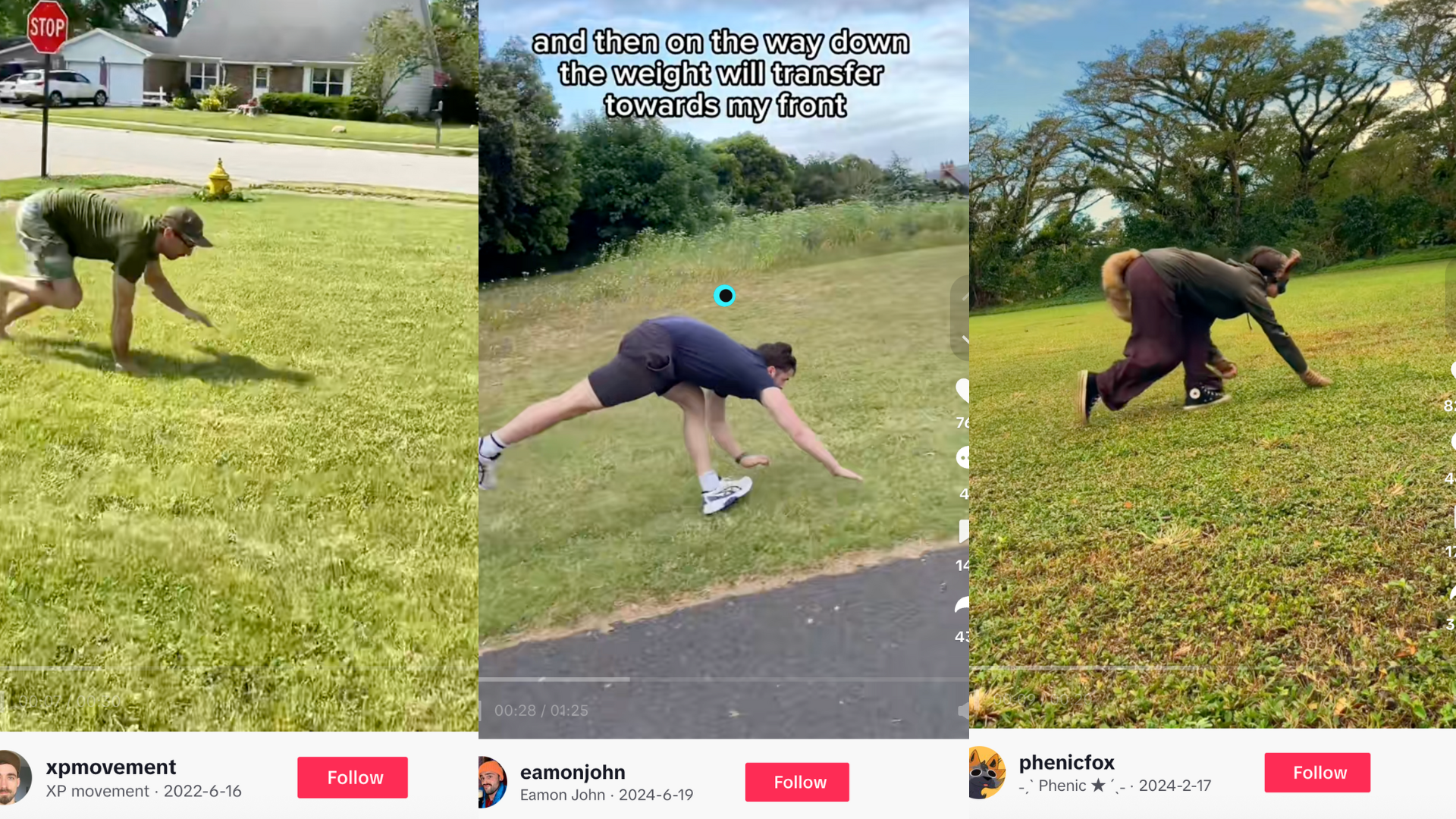Scroll through TikTok or Instagram fitness content these days, and you might stumble upon something that’ll makes you do a double-take: videos of people running around on all fours. Sometimes it’s muscular men in army fatigues, and others it’s people in furry masks and tails gracefully bounding across parks.
The movement combines elements of parkour, gymnastics, and animal locomotion, creating workouts that are part fitness routine, part creative expression, and part return to “primal movement.” Welcome to “quadrobics,” the latest fitness trend has people literally going back to basics—or rather, back to the movement patterns our four-legged friends never abandoned.
My colleague Lindsey Ellefson recently recommended primal movement as an alternative way to exercise. I agree there’s merit to the idea that getting on all fours can reframe exercise as more joyful, especially if you struggle to work out. I’m not here to talk you out of running all fours. I’d simply like to remind anyone who endeavors to follow the latest fitness trends that two legs can get the job done just as well.
What exactly is quadrobics?
At its core, quadrobics involves moving on all fours using various animal-inspired patterns. A quick search on TikTok shows that there’s an extra cultural element to the practice: The aesthetic component—complete with animal ears, tails, and masks—has become just as important as the physical exercise itself. If that’s not your thing, the fitness side of it still about tapping into your animalistic instincts. You might crawl like a bear, bound like a rabbit, or stalk like a big cat, often incorporating jumps, rolls, and other dynamic movements.
Despite its unconventional appearance, quadrobics does offer legitimate fitness benefits. Moving on all fours engages the entire body in ways that traditional upright exercises often don’t. It requires significant core strength, works the shoulders and arms through weight-bearing positions, and challenges coordination and balance.
Four legs good, two legs…also good
Part of quadrobics’ appeal undoubtedly lies in its visual novelty and social share-ability. In an era where fitness influencers are constantly seeking the next eye-catching workout trend, moving like an animal certainly will make you stand out in a crowded field of kettlebell swings and burpees. The costume element adds another layer of engagement, appealing to communities interested in alternative identities, cosplay, and self-expression.
While quadrobics enthusiasts are having their moment in the social media spotlight, it’s worth remembering that human beings evolved to be pretty solid at bipedal locomotion. Running, walking, jumping, dancing, cycling, swimming—the list of highly effective exercises you can do on two legs is virtually endless. It’s also worth noting that switching to all-fours introduces some risk: Without proper form, you could easily experience a wrist or shoulder injury from supporting body weight.
Both two- and four-legged exercise will serve you well
Want to build functional strength? Two-legged squats, lunges, and deadlifts have got you covered. Looking for coordination challenges? Try dance, martial arts, or agility drills. Seeking that mind-body connection? Yoga offers centuries of refined practice. The beauty of bipedal movement is its versatility—you can go from a gentle walk to an intense sprint workout using the same basic mechanics you’ve been perfecting since you learned to walk as a toddler. While quadrobics practitioners hop and crawl their way to fitness goals, the rest of us can take comfort in knowing that our bipedal design is spectacular as-is.
The most important thing isn’t how many limbs an exercise uses—it’s that you move your body regularly in ways that challenge it, bring you satisfaction, and support your long-term health. I love the idea that people are increasingly willing to explore unconventional forms of movement and challenge traditional notions of what exercise should look like. This openness to experimentation is valuable, whether it leads someone to quadrobics, pole dancing, axe throwing, or rediscovering the joy of playground equipment.
The bottom line
The real key is finding forms of movement that you genuinely enjoy and can sustain over time. For some people, that might indeed involve channeling their inner wolf. For others, it’s a simple daily walk, a weekly tennis game, or a regular yoga practice. The “best” workout is ultimately the one you’ll actually do consistently. If donning animal ears and practicing your bear crawl brings you joy and gets you moving, there’s nothing wrong with embracing your wild side. Just remember this: Your perfectly adequate human legs have taken you this far in life. They’re probably up for whatever fitness challenge you want to throw at them next.
